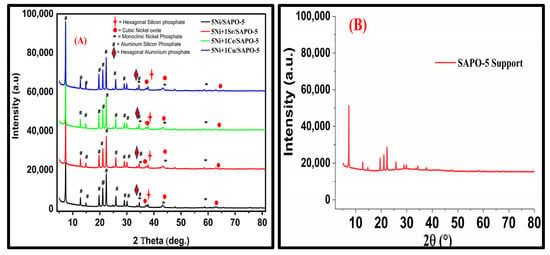Arylalkylamine N-acetyltransferase (AANAT) is a crucial rate-limiting enzyme in the synthesis of melatonin.
AANAT has been confirmed to be independently duplicated and inactivated in different animal taxa in order to adapt to the environment. However, the evolutionary forces associated with having a single
[...] Read more.
Arylalkylamine N-acetyltransferase (AANAT) is a crucial rate-limiting enzyme in the synthesis of melatonin.
AANAT has been confirmed to be independently duplicated and inactivated in different animal taxa in order to adapt to the environment. However, the evolutionary forces associated with having a single copy of
AANAT remain unclear. The greater horseshoe bat has a single copy of
AANAT but exhibits different hibernation rhythms in various populations. We analyzed the adaptive evolution at the gene and protein levels of
AANAT from three distinct genetic lineages in China: northeast (NE), central east (CE), and southwest (SW). The results revealed greater genetic diversity in the
AANAT loci of the NE and CE lineage populations that have longer hibernation times, and there were two positive selection loci. The catalytic capacity of AANAT in the Liaoning population that underwent positive selection was significantly higher than that of the Yunnan population (
p < 0.05). This difference may be related to the lower proportion of α helix and the variation in two interface residues. The adaptive evolution of
AANAT was significantly correlated with climate and environment (
p < 0.05). After controlling for geographical factors (latitude and altitude), the evolution of
AANAT by the negative temperature factor was represented by the monthly mean temperature (r = −0.6,
p < 0.05). The results identified the gene level variation, functional adaptation, and evolutionary driving factors of
AANAT, provide an important foundation for further understanding the adaptive evolution of the single copy of
AANAT in pteropods, and may offer evidence for adaptive hibernation rhythms in bats.
Full article
 IJMS
IMPACT
IJMS
IMPACT Applied Sciences
IMPACT
Applied Sciences
IMPACT Sustainability
IMPACT
Sustainability
IMPACT Sensors
IMPACT
Sensors
IMPACT JCM
IMPACT
JCM
IMPACT Materials
IMPACT
Materials
IMPACT Molecules
IMPACT
Molecules
IMPACT Energies
IMPACT
Energies
IMPACT Electronics
IMPACT
Electronics
IMPACT Remote Sensing
IMPACT
Remote Sensing
IMPACT Cancers
IMPACT
Cancers
IMPACT Nutrients
IMPACT
Nutrients
IMPACT Mathematics
IMPACT
Mathematics
IMPACT Foods
IMPACT
Foods
IMPACT Buildings
IMPACT
Buildings
IMPACT Polymers
IMPACT
Polymers
IMPACT Animals
IMPACT
Animals
IMPACT Water
IMPACT
Water
IMPACT Plants
IMPACT
Plants
IMPACT Agronomy
IMPACT
Agronomy
IMPACT Biomedicines
IMPACT
Biomedicines
IMPACT Processes
IMPACT
Processes
IMPACT Microorganisms
IMPACT
Microorganisms
IMPACT Diagnostics
IMPACT
Diagnostics
IMPACT Nanomaterials
IMPACT
Nanomaterials
IMPACT Viruses
IMPACT
Viruses
IMPACT Medicina
IMPACT
Medicina
IMPACT Healthcare
IMPACT
Healthcare
IMPACT Cells
IMPACT
Cells
IMPACT Forests
IMPACT
Forests
IMPACT Agriculture
IMPACT
Agriculture
IMPACT Land
IMPACT
Land
IMPACT JMSE
IMPACT
JMSE
IMPACT IJERPH
IJERPH
 Symmetry
IMPACT
Symmetry
IMPACT Genes
IMPACT
Genes
IMPACT Pharmaceutics
IMPACT
Pharmaceutics
IMPACT Coatings
IMPACT
Coatings
IMPACT Micromachines
IMPACT
Micromachines
IMPACT Pharmaceuticals
IMPACT
Pharmaceuticals
IMPACT Atmosphere
IMPACT
Atmosphere
IMPACT Children
IMPACT
Children
IMPACT Religions
IMPACT
Religions
IMPACT Antioxidants
IMPACT
Antioxidants
IMPACT Life
IMPACT
Life
IMPACT Metals
IMPACT
Metals
IMPACT Biomolecules
IMPACT
Biomolecules
IMPACT Vaccines
IMPACT
Vaccines
IMPACT Education Sciences
IMPACT
Education Sciences
IMPACT Minerals
IMPACT
Minerals
IMPACT Horticulturae
IMPACT
Horticulturae
IMPACT Brain Sciences
IMPACT
Brain Sciences
IMPACT JPM
IMPACT
JPM
IMPACT Bioengineering
IMPACT
Bioengineering
IMPACT




























